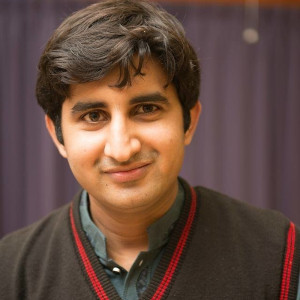Chapters

Powers of Complex Numbers Introduction
We can find powers of Complex numbers, like  , by either performing the multiplication by hand or by using the Binomial Theorem for expansion of a binomial
, by either performing the multiplication by hand or by using the Binomial Theorem for expansion of a binomial  . This can be somewhat of a laborious task. Fortunately, there is a nifty shortcut that we can apply to shorten the process and it involves the Polar form of Complex numbers.
. This can be somewhat of a laborious task. Fortunately, there is a nifty shortcut that we can apply to shorten the process and it involves the Polar form of Complex numbers.
Example
Find 

with a modulus 
which equals

Powers of the Polar Form
We saw in the Polar Representation section the proof that

and we're going to extend this definition to show that the power of any Complex number  also has a very special and useful result.
also has a very special and useful result.
Example
We'll extend the result for  and apply it to
and apply it to 
If  with
with  then
then

then

Example
If  with
with  then
then

We can now infer that

De Moivre's Theorem and The Unit Circle
By setting  and using the Unit Circle, we obtain De Moivre's Theorem
and using the Unit Circle, we obtain De Moivre's Theorem

This is an extremely useful theorem for finding powers and roots of Complex numbers.
We can express the sine or cosine function of a multiple of an angle  ,
,  , by powers of the sine and cosine of the original angle
, by powers of the sine and cosine of the original angle  . We do this by applying the Binomial Theorem for a power
. We do this by applying the Binomial Theorem for a power  to the product
to the product  .
.
Example
If  then we can expand the right side in powers of the sine and cosine of
then we can expand the right side in powers of the sine and cosine of  by using the binomial expansion for
by using the binomial expansion for 
Binomial Expansion for
 :
:






for decreasing powers of cosine from  and increasing powers of sine from
and increasing powers of sine from 
then

The Real part  of the expansion is
of the expansion is

and the Imaginary part  of the expansion is
of the expansion is














It is a good for me for giving some help in order to understand very well
this qwestion is necessary
l need support for complex numbers , inverse of quadratic equation, set theory